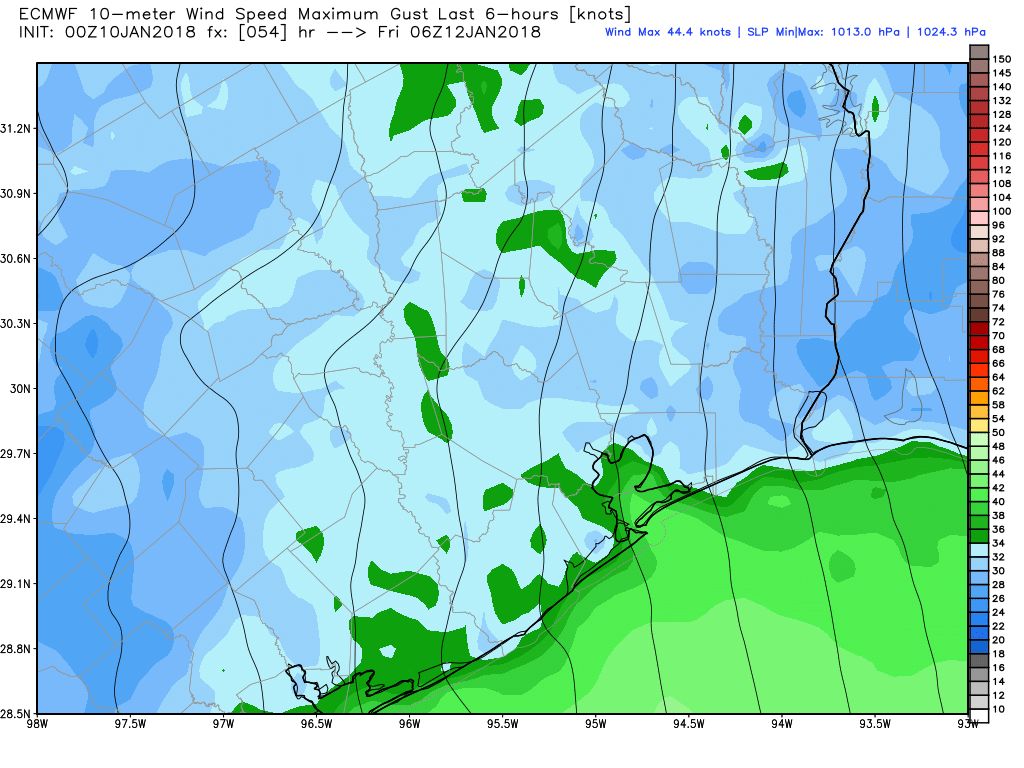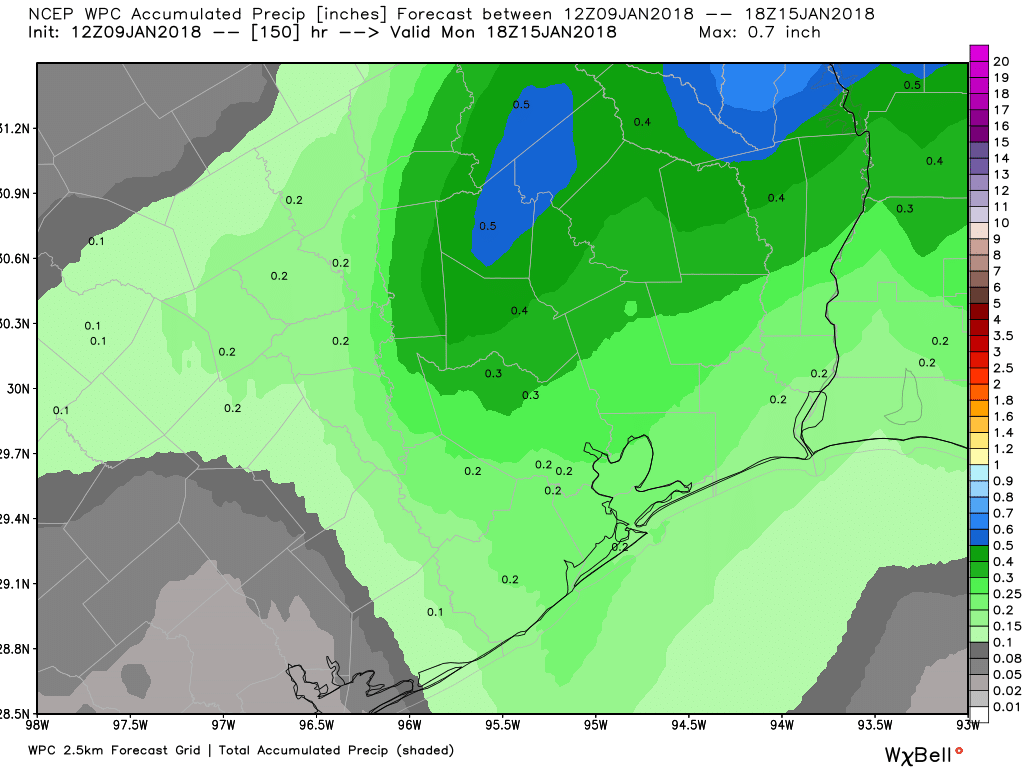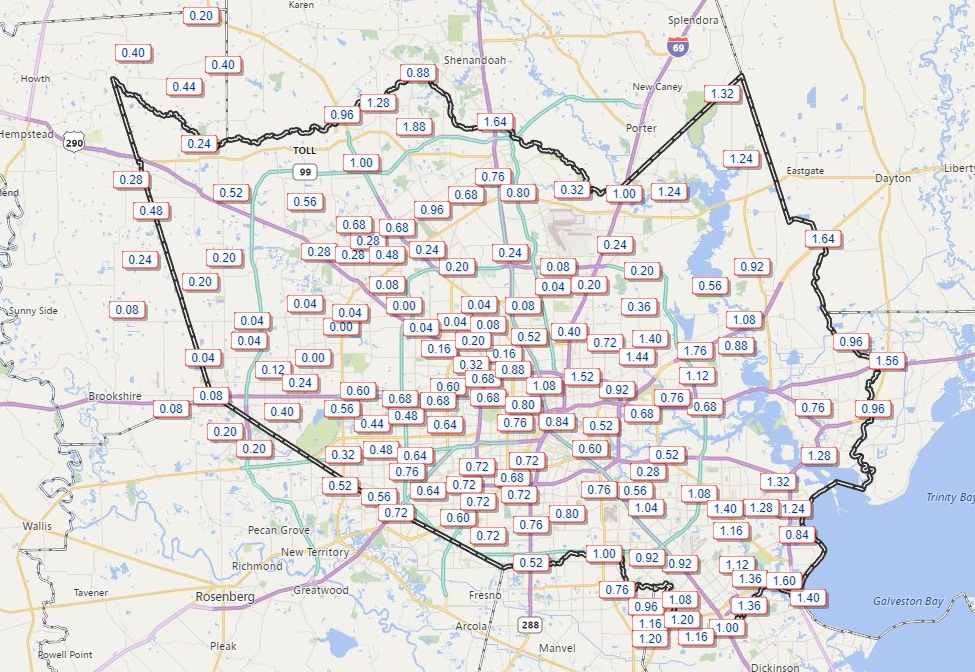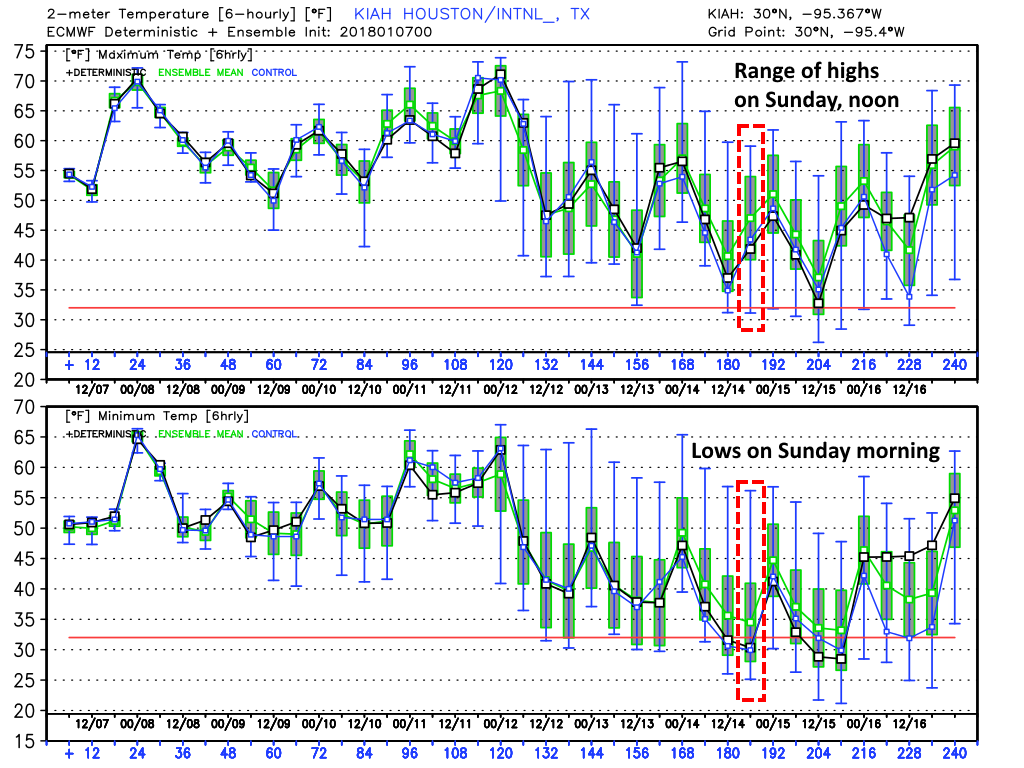Parts of the Houston region, particularly the western half of the area, are seeing dense fog this morning. Sunrise, and later increasing winds, should help break up the fog by mid-morning but until then please take caution on roadways.
Wednesday
Even after the fog clears skies should remain gray today, with winds picking up out of the southeast as the onshore flow gets a bit stronger. Expect highs in the low- to mid-60s, with not much of a temperature drop off tonight.
Thursday
These somewhat stronger winds during the overnight hours should help to limit the development of fog on Thursday morning, although it’s still possible given warmer air and moisture in the atmosphere. Highs Thursday should reach up to near 70 degrees before a front moves through, probably sometime during the early afternoon hours. It appears as though some line of showers and thunderstorms will accompany the front, but this system should move through fairly briskly on its way toward the Gulf of Mexico. I wouldn’t anticipate accumulations of more than a few tenths of an inch of rain.

Winds should really kick up behind the front, and the National Weather Service has issued a gale watch for waters off the coast with rough seas anticipated Thursday night into Friday morning.



